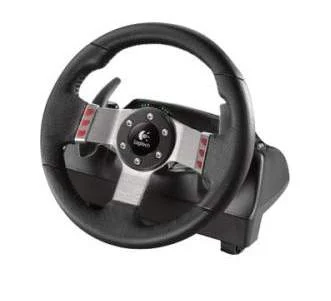If you’ve ever played a racing game with a specialized steering wheel, chances are you’ve experienced haptic feedback when hitting an object, another vehicle, or veering off the side of the road.
Of course, some racing wheels for games take the racing experience to another level by generating force feedback – pulling against the driver to mimic the feeling of actually navigating a car. The goal of this type of technology? To make for a more lifelike driving experience within a virtual gaming environment.

Now AT&T Labs and Carnegie Mellon are eyeing advanced video game tech in an effort to improve real world driving experiences.
To be sure, researchers are
attempting to adapt a haptic feedback steering wheel to deliver turn-by-turn driving directions.
The steering wheel would be loaded with 20 vibrating actuators capable of creating several distinct vibration patterns.
Using the motors combined with GPS directions, the steering wheel could vibrate in a clockwise motion for right turn or counterclockwise for a left turn. Essentially, by feeling when he or she needs to turn, the driver would remain focused on the road – rather than constantly monitoring a GPS device or listening for instructions.
AT&T Labs researcher Kevin Li says his primary goal is to develop a system or platform that drivers can understand innately – an initiative that is apparently still several years away from completion.
With support from the government, I can see significant effort and funds being put into a system such as this to help reduce accidents caused by distracted driving. Indeed, just last week the NHTSA announced its official proposal to remove moving maps from vehicles. If implemented correctly, the above-mentioned system could theoretically offer a viable alternative.






